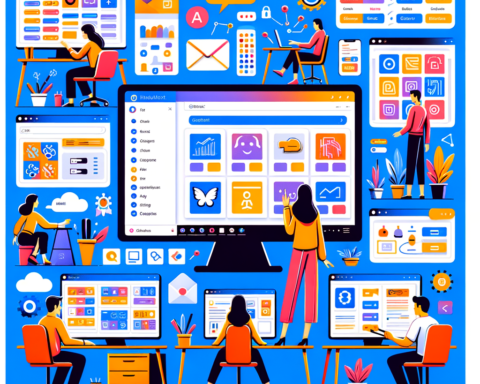Let’s dive deeper into Microsoft’s latest venture, why it’s happening now, and what users might expect from this fresh update.
Why Pay for Themes?
As software evolves and companies continue to find ways to enhance the user experience, customization has stood out as a critical element. Users love having a personal stamp on their workspaces, making everything from their taskbars to their apps feel uniquely theirs. With personalization being an ongoing trend, Microsoft seems to have recognized another opportunity, but this time it’s no longer free.
But the nagging question is: **Why pay for themes?**
Themes may not sound groundbreaking, but they’re about more than just aesthetics. They can set the tone, encourage creativity, and even provide a calming atmosphere in the middle of a chaotic workday. For Microsoft, this might also mark a growing shift toward monetizing elements of the digital workspace that were once considered standard features.
While you might be accustomed to getting your hands on free themes for email apps or customizing your background at no cost, Microsoft is entering new territory. By introducing paid themes for Outlook, they’re subtly reinforcing the idea that customization is a “premium” feature — one that deserves a price tag.
The Appeal of Outlook Themes
Customization has a way of making everyday tasks more enjoyable. Whether you’re sending an email, reviewing your calendar, or organizing your inbox, having a visually appealing backdrop can make a huge difference. Outlook themes aren’t just about colors; Microsoft is presenting them as a way for users to make their workspace more enjoyable, mood-enhancing, and, in some ways, functional.
Here are a few reasons why people might bite the bullet and pay for Outlook themes:
- Professional Aesthetics: Themes offer a sense of personal and professional customization that reflects the user’s taste or artistry. A well-designed, sleek theme can elevate your email experience to match your workflow and demeanor.
- Personalized Workspace: When you spend hours in Outlook every day, you want a workspace that feels comfortable. Custom themes allow users to escape the default colors and visual monotony they’re used to.
- Branding: Since many companies use Outlook in a corporate environment, businesses might want to leverage custom themes in their organizations to create consistency in branding or allow employees to showcase company colors or standards.
A Look at Microsoft’s Strategy
This latest monetization of customization isn’t happening in isolation. Microsoft has been revamping many of its core apps with additional personalized elements and quietly pushing users toward a more subscription-based experience. Think Office 365, Microsoft Teams Premium, or even Xbox Game Pass. The themes update is yet another example that reflects a bigger trend within Microsoft’s ecosystem — adding value through user-centered features and paying for that added personalization.
It seems like Microsoft is taking cues from the broader app marketplace, where many digital products now come fragmented into ‘free,’ ‘premium,’ and ‘exclusive’ experiences. Offering themes for a fee seems like a natural next step for a company that’s increasingly relying on software-as-a-service models.
While we don’t know yet how the pricing will scale—whether it will be a reasonable one-time fee or part of an ongoing subscription package—this follows Microsoft’s broader attempts to diversify its revenue streams instead of focusing purely on software licenses.
Is It Worth It?
The real dilemma for many users will be if it’s worth digging into their pockets for Outlook themes. Upon hearing that something as simple as an email theme comes at a price, it might initially sound… well, absurd. After all, this is fundamentally about visual aesthetics, right? And shouldn’t that come free, as it has for decades, in a world where wallpapers, widgets, and even desktop icons are available in endless variation at zero cost?
Yes, and no.
While some may scoff at the idea of paying for email decoration, for other users — especially those in creative industries or those who spend a disproportionate amount of time staring at emails — the investment could very well be seen as minimal compared to the daily efficiency boost and mental relief a beautiful workspace might deliver.
Additionally, by making themes a paid service, Microsoft can exert control over quality and exclusivity. Unlike free alternatives, paid themes are likely to be polished, well-designed, and perhaps come with extra perks, such as dynamic designs that shift colors or imagery based on the time of day or even your calendar’s tasks.
But Here’s The Catch:
Not everyone is going to want to pay extra for aesthetics, and that’s where Microsoft might run into some discontent. There’s a significant chance that many users could view this move as more of a “cash grab” than a justified fee for added value. Especially when there are ample tools and third-party email clients that already offer free customization options.
Microsoft will have to convince users that they are paying for more than just “pretty backgrounds.” Performance enhancements, mood-setting atmospherics, or even some form of productivity-enabling elements could be critical selling points if Microsoft hopes for large-scale adoption.
What’s Next?
As of now, there’s no confirmed roll-out date for when paid Outlook themes will go live, but it’s clear that Microsoft is slowly testing the waters. Whether you love fancier email experiences or have no care at all, it’s undeniable that the scope of what constitutes “premium” in business applications is evolving.
Will this move find adoption, or will it be seen as a needless monetization of a basic feature? Only time will tell.
In the meantime, it might be wise to prepare… or in this case, prepare your bank account for when those beautifully curated Outlook themes do come knocking.
Conclusion: A New Era of Paid Customization?
Microsoft’s decision to charge for Outlook themes is not just a shift in how we think about personalization in emails — it’s also a reflection of the growing trend toward monetizing all aspects of the software we use daily. Love it or leave it, this could very well mark the beginning of a new era where even our inbox looks might carry a price tag.
For those eager to distinguish their Outlook from the crowd, paying for themes may be worth the cost. However, for the minimalists (and the frugally minded), sticking with default themes or searching for third-party alternatives might become the popular route.
Either way, the arrival of paid Outlook themes signifies one truth in the tech world: there’s a price for everything — even for a dash of color.










